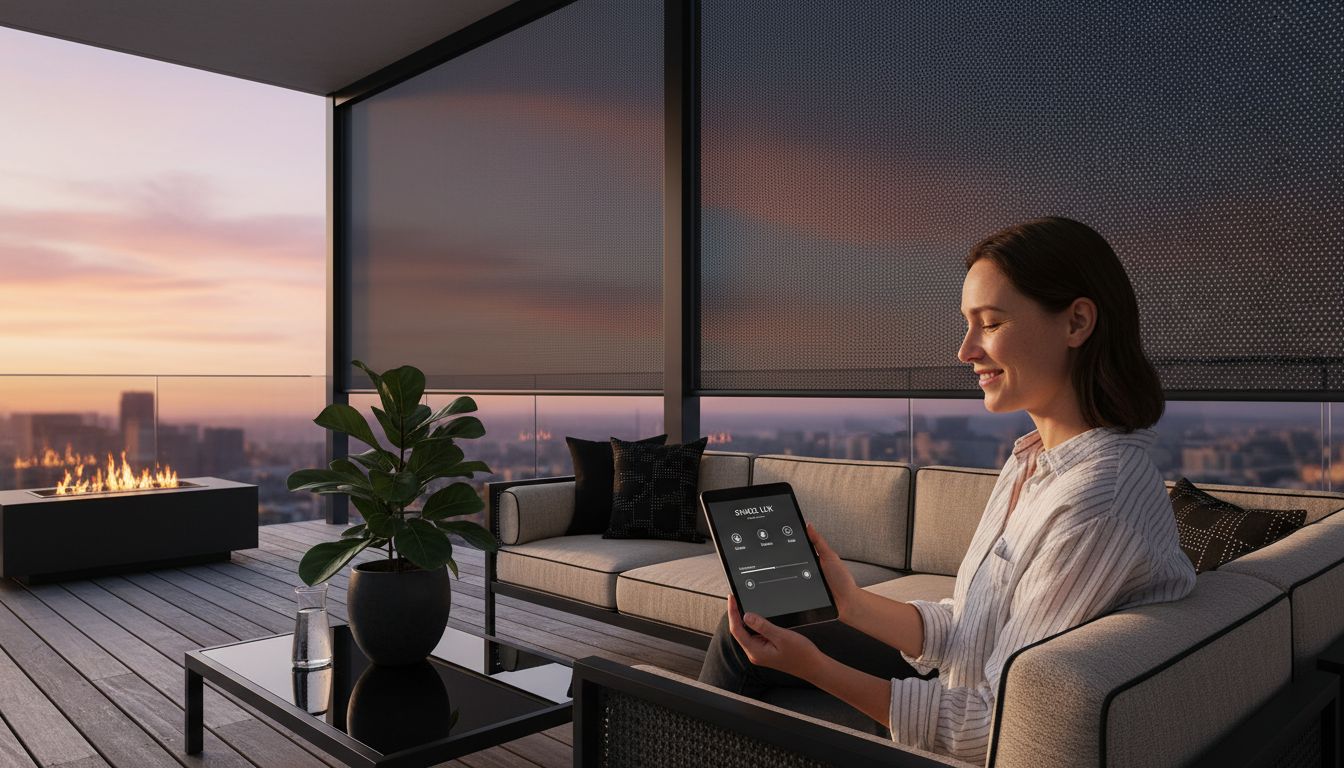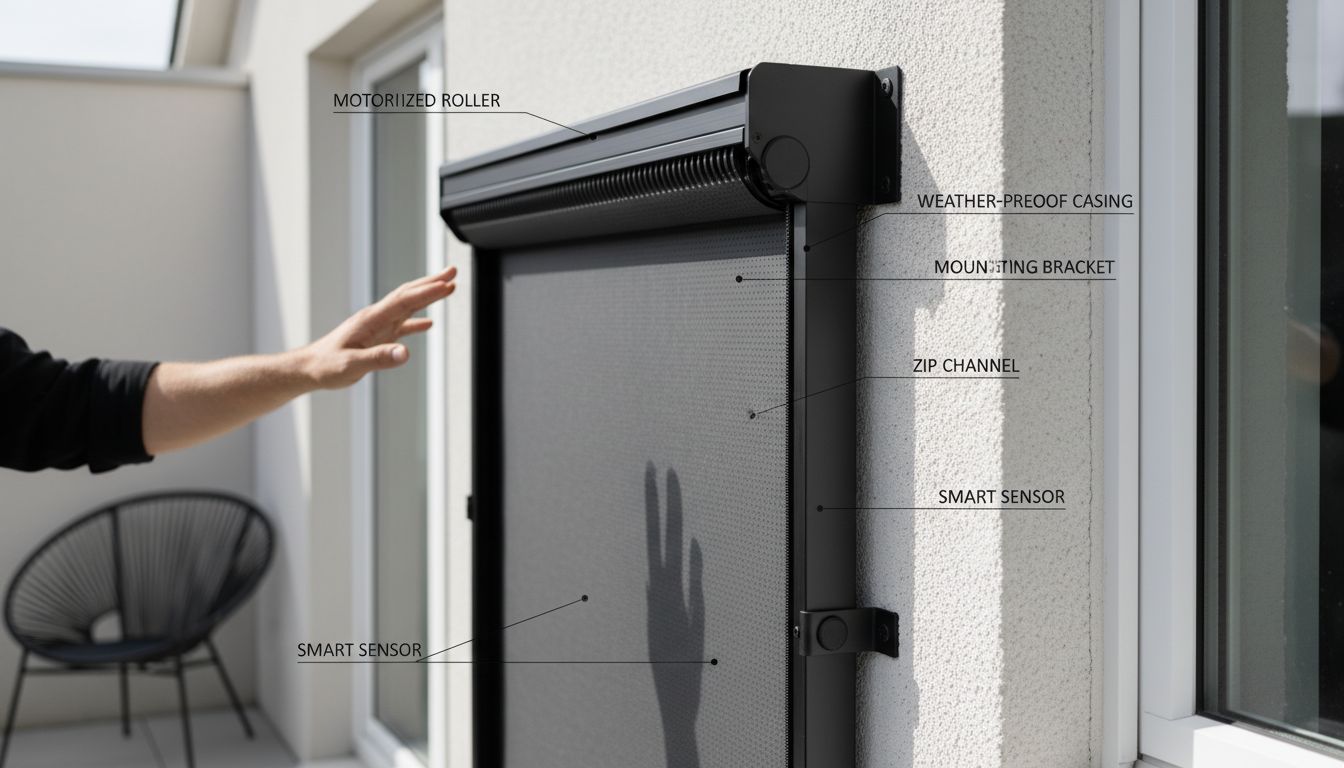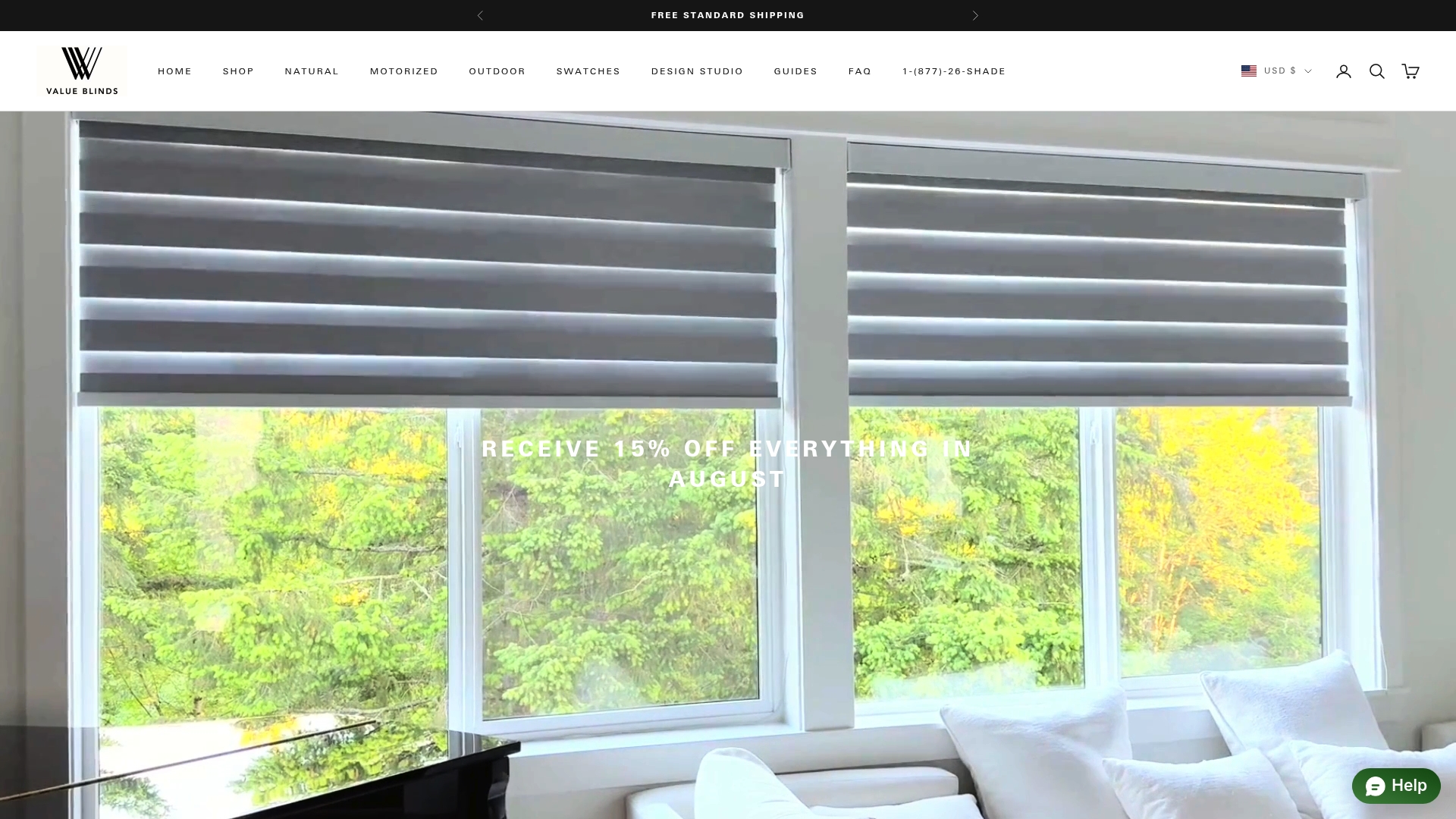
Electric Outdoor Blinds: Complete Guide for Homeowners
More homeowners are choosing electric outdoor blinds for a reason. With automated controls and weather-resistant design, these modern systems turn patios and decks into comfortable retreats all year long. Over 60 percent of new homes now include some form of motorized shading solution. Whether you want easier light control or better energy efficiency, electric outdoor blinds combine convenience and technology to make outdoor living simpler and more enjoyable.
Table of Contents
- What Are Electric Outdoor Blinds?
- Major Types of Electric Outdoor Blinds
- Core Features and How They Work
- Installation Processes and Requirements
- Cost Factors and Maintenance Essentials
Key Takeaways
| Point | Details |
|---|---|
| Automated Convenience | Electric outdoor blinds utilize motorized technology for easy control through remote or smart devices, enhancing functionality. |
| Variety of Options | Different types, such as roller shades and zip track blinds, cater to various aesthetic and functional needs. |
| Installation Considerations | Proper site assessment, electrical preparation, and structural compatibility are critical for successful installation. |
| Cost and Maintenance | Initial costs range from $500 to $3,000, and maintenance expenses should be factored into budget planning for longevity. |
What Are Electric Outdoor Blinds?
Electric outdoor blinds represent a sophisticated window treatment solution designed to enhance both residential and commercial exterior spaces with automated functionality. These innovative shading systems combine advanced motorized technology with durable exterior materials, allowing homeowners to control light, temperature, and privacy at the touch of a button.
Unlike traditional manual outdoor blinds, electric outdoor blinds utilize integrated motors and smart control mechanisms that enable seamless operation through remote controls, smartphone apps, or wall-mounted switches. These systems are engineered to withstand various environmental conditions, featuring weather-resistant fabrics and robust mechanical components that can automatically adjust based on sunlight intensity, wind speed, or preset schedules.
The primary components of electric outdoor blinds typically include:
- Motorized roller mechanism
- Weatherproof fabric or material
- Remote control or smart home integration
- Mounting brackets designed for exterior installation
- Optional wind and sun sensors for automated adjustments
By exploring modern home automation solutions, homeowners can discover how electric outdoor blinds seamlessly integrate convenience, energy efficiency, and aesthetic appeal into their exterior living spaces.
Major Types of Electric Outdoor Blinds
Electric outdoor blinds come in several distinct categories, each designed to meet specific aesthetic and functional requirements for residential and commercial spaces. These sophisticated window treatments offer homeowners multiple options for enhancing exterior environments through advanced motorized technology.
Roller Shade Electric Blinds represent the most versatile type of electric outdoor blinds. These systems feature a sleek, minimalist design with fabric that rolls up and down smoothly via integrated motors. Ideal for patios, decks, and pergolas, roller shade electric blinds provide excellent sun protection and privacy control with minimal visual obstruction.
Drop Arm Electric Blinds offer a more traditional architectural approach, extending outward from mounting points and providing comprehensive coverage for larger exterior spaces. These blinds are particularly effective for covering wide windows, balconies, and outdoor entertainment areas, with precise angle adjustments and wind-resistant capabilities.
Additional electric outdoor blind variations include:
- Screen Shade Electric Blinds: Designed with mesh-like materials for optimal airflow and visibility
- Vertical Track Electric Blinds: Perfect for creating enclosed outdoor rooms or separating exterior spaces
- Zip Track Electric Blinds: Feature side channels for enhanced wind resistance and tight fabric installation

Homeowners interested in exploring comprehensive motorized shade solutions can discover how these innovative systems transform outdoor living experiences through seamless automation and design flexibility.
Core Features and How They Work
Electric outdoor blinds operate through sophisticated technological systems that transform traditional window treatments into intelligent, responsive home enhancement solutions. At their core, these advanced shading systems integrate precision motors, sensor technologies, and smart control mechanisms to deliver unprecedented convenience and functionality for homeowners.
The fundamental mechanics involve a tubular motor mounted within the roller mechanism, which enables smooth, controlled movement of the blind fabric. These motors connect directly to power sources and can be hardwired or battery-powered, providing flexibility in installation. Advanced models incorporate wireless communication protocols like Zigbee or WiFi, allowing seamless integration with smartphone apps, home automation systems, and voice-activated assistants.
Key technological components that define electric outdoor blinds include:

- Precision DC Motors: Ensuring quiet, smooth operation with minimal energy consumption
- Wireless Control Modules: Enabling remote management through smartphone apps
- Environmental Sensors: Detecting sunlight, wind speed, and temperature for automatic adjustments
- Safety Mechanisms: Incorporating obstacle detection and auto-stop features
- Battery Backup Systems: Maintaining functionality during power interruptions
For homeowners seeking deeper insights into home automation technologies, smart blinds solutions offer comprehensive explanations of how these innovative systems can transform residential living experiences.
Installation Processes and Requirements
Electric outdoor blinds demand a precise and methodical installation process that requires careful planning, specialized tools, and specific technical expertise. Homeowners must consider multiple factors before beginning installation, including structural integrity, electrical requirements, and environmental conditions that could impact the blind system’s performance and longevity.
The installation process typically involves several critical stages. First, homeowners must perform a comprehensive site assessment to determine the most suitable mounting locations, ensuring structural support and optimal sun exposure. This initial evaluation includes measuring precise dimensions, identifying appropriate mounting surfaces, and checking for potential obstructions that might interfere with the blind’s operation. Professional installers often recommend using reinforced mounting brackets designed specifically for exterior applications to withstand environmental stressors.
Key installation requirements and considerations include:
- Electrical Preparation: Ensuring proper voltage, dedicated circuits, and weatherproof electrical connections
- Structural Compatibility: Verifying wall or ceiling materials can support the blind’s weight and mechanical stress
- Weather Resistance: Selecting installation locations protected from direct rain and extreme wind exposure
- Access to Power: Planning for either hardwired electrical connections or convenient battery replacement points
- Professional Calibration: Configuring motor settings, limit switches, and sensor integrations
For homeowners seeking comprehensive guidance on integrating advanced window treatments, motorized blinds and shades solutions provide in-depth insights into creating seamless, technologically sophisticated exterior environments.
Cost Factors and Maintenance Essentials
Electric outdoor blinds represent a significant investment that requires careful financial planning and ongoing maintenance strategies. The initial cost can vary dramatically based on factors like size, technological complexity, material quality, and customization options, typically ranging from $500 to $3,000 per unit for residential applications.
The total cost of ownership extends beyond the initial purchase price, encompassing installation expenses, electrical integration, and long-term maintenance requirements. Professional installation can add $200 to $800 to the total project cost, depending on the complexity of the electrical work and mounting requirements. Homeowners should budget for periodic professional inspections, which help prevent potential mechanical failures and ensure optimal performance of the sophisticated motorized systems.
Key cost and maintenance considerations include:
- Initial Purchase Costs: Varying based on blind size, motor quality, and technological features
- Installation Expenses: Professional mounting and electrical integration
- Annual Maintenance: Cleaning, lubrication, and technical calibration
- Replacement Component Costs: Motors, sensors, and control mechanisms
- Energy Efficiency Savings: Potential reduction in heating and cooling expenses
For homeowners seeking comprehensive insights into smart home technologies, understanding home automation blinds can provide valuable guidance on making informed investment decisions for exterior window treatments.
Elevate Your Outdoor Living with Custom Electric Blinds
If managing sunlight, privacy, and weather protection feels like a constant challenge, electric outdoor blinds offer a smart solution. They bring effortless control and stylish appeal to your exterior spaces. At Value Blinds, you can explore a wide range of motorized and weather-resistant products designed for your unique needs. Whether you want a sleek roller shade or a durable zip track system, our selection supports both convenience and design.

Discover unmatched quality and customization with our Retractable Awnings for Versatile Outdoor Shade Solutions | Enhance Your Space. Act now to upgrade your home with energy-efficient and easy-to-install motorized blinds. Visit Value Blinds to start your effortless outdoor transformation with expert guidance and free swatches. Don’t wait to experience the perfect blend of function and beauty outside your home.
Frequently Asked Questions
What are electric outdoor blinds?
Electric outdoor blinds are automated window treatment solutions designed for exterior spaces. They use motorized technology to control light, temperature, and privacy, offering convenience and durability against the elements.
How do electric outdoor blinds work?
Electric outdoor blinds operate using a tubular motor that moves the blind fabric up and down. They can be controlled via remote controls, smartphone apps, or wall switches, and some models include sensors for automatic adjustments based on environmental conditions.
What are the different types of electric outdoor blinds available?
The major types of electric outdoor blinds include roller shade, drop arm, screen shade, vertical track, and zip track blinds. Each type offers unique features tailored for different outdoor spaces and aesthetic preferences.
What are the installation requirements for electric outdoor blinds?
Installation of electric outdoor blinds requires assessing structural integrity, ensuring proper electrical setup, and selecting weather-resistant mounting locations. Professional installation is recommended to ensure optimal performance and longevity of the system.







